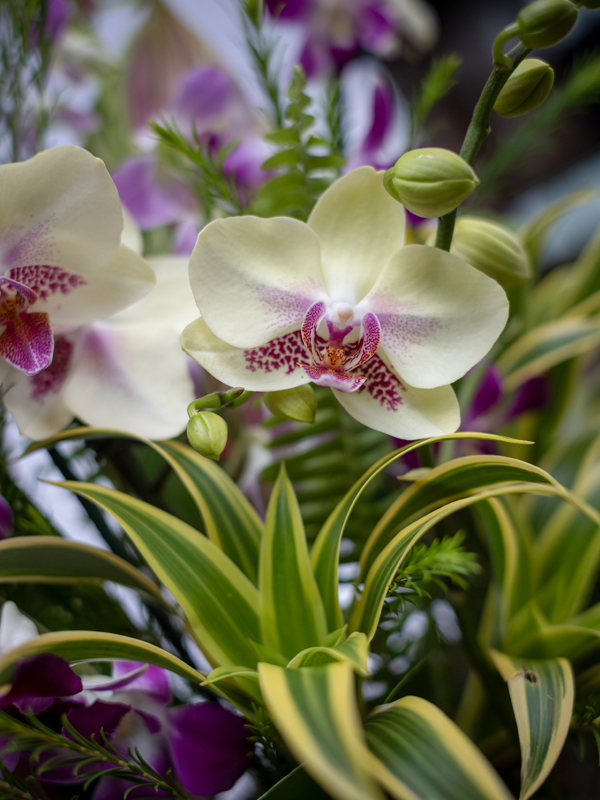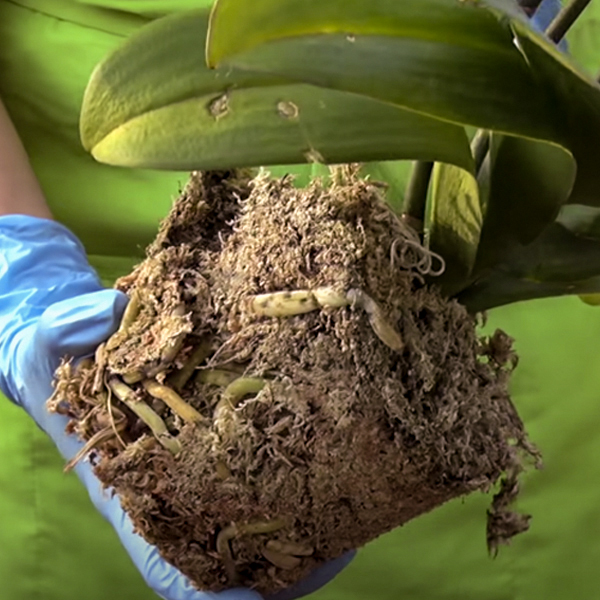How to See Them Through the Winter
January seems like an unlikely time to talk orchids, yet they're at the top of our minds at the Garden this month, as we prepare for the Orchid Show. This got us thinking: how does a smart gardener care for orchids in the depths of winter? With just a few adjustments to the basics.
Today's temperature is…
Did you know that cold outdoor weather can even affect indoor orchids? You may need to move plants that live on windowsills or near radiators—it may be time to switch cool-growing orchids closer to windows and warm-growing orchids to an even warmer room in the house. Are your windows well sealed? Cold drafts can be an orchid's bane. Not even a leaf tip should touch the window glass!

The light shift
Low winter sun and bare trees can change the lighting in your rooms in winter. Shift sun-loving orchids to maximize exposure to every ray, or add a light-filtering curtain if orchids that prefer shade are getting too much sun.
There is an upside to the short days and lower light of winter: it triggers the flowering process for many orchids. (A caretaking note: stay ahead of long flower stalks by staking them as soon as they start growing, since they're more flexible and easily positioned then.)
Watchful watering
Yes, it's drier in your house in winter. Yes, it's warmer in your house in winter. Nonetheless, your orchid may not need too much extra water. In any season, overwatering is the number one indoor orchid threat! Since every orchid has its own water preference, it pays to know specifics. For great articles on individual species, we often turn to the pages of Orchids and Orchid Digest magazines—both available (back issues, too!) at our Lenhardt Library.
Two tips for knowing when to water: First, pick up the pot. Does your orchid feel light? Then it's probably dry. Second, orchids with pseudobulbs (the swollen stem that stores water) tell you when they need water—if the pseudobulb is wrinkled or shriveled, it's time to water your orchid.
Wanted: Humidity
There's a lot of humidity in the rain forests—and not much in the average Chicago home in the winter. In general, tropical orchids like 60 to 75 percent humidity. Humidity below 50 percent? Might be time to break out a humidifier. One favorite (and easy) way to raise winter humidity in a small way is to set up a pebble tray. Fill a shallow tray (a boot tray works great) with river rocks or pebbles, then add water about half way up the rocks. Set orchid pots, loosely grouped, on the rocks, where they'll pick up the extra humidity from below. Make sure that water doesn't touch any roots and that there's still good air circulation around the plants.

Figure on fertilizing
For orchids developing new growth and flowers, now's the time to fertilize during every other watering. An important exception: if your orchid is in its dormant phase, do not fertilize (keep it out of direct sun and water less frequently, too).
Re: Repotting
It's a FAQ in any season: How do I repot my orchid? Since a video is worth 1,000 words, check out a pair of short videos on the topic. Orchid enthusiast (and master's degree candidate in our plant biology and conservation program) Anne Nies goes deep into the topic, showing you a step-by-step approach to repotting a Phalaenopsis and repotting a Paphiopedilum.
Of course, your home is different than your neighbor's, and the small adjustments that are right for your orchids won't be the same for everyone. Got more questions? Come to the Orchid Show!
Karen Zaworski is a garden writer and photographer who lives and gardens in Oak Park, Illinois

